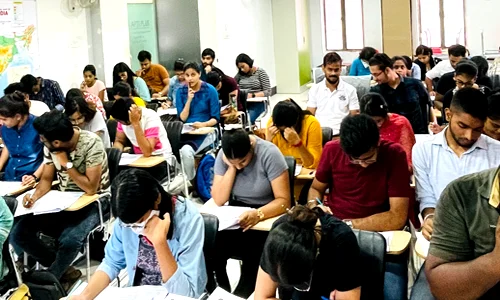



First Indian study measuring inhalable microplastics at breathing height across four metros shows plastics now form up to 5% of urban particulate pollution. Markets in Kolkata and Delhi show highest loads. iMPs carry pathogens, heavy metals and toxic chemicals, posing emerging health risks including inflammation, hormonal disruption and possible cancer pathways. Urgent inclusion of microplastics in air-quality regulation is needed.
Click to View MoreDust pollution is a significant contributor to deteriorating air quality, mainly arising from construction work, road dust, industrial activities, and natural windblown sources. It increases particulate matter levels, harms human health, disrupts visibility, and affects ecosystems. Effective control requires better regulation, enforcement, dust-suppression measures, greener urban design, and active public awareness.
Click to View MoreChina cleaned its air through strict central planning, the 2013 action plan, industrial controls, and rapid EV adoption backed by bureaucratic accountability. India needs similar long-term, well-funded, multi-sector action instead of reactive steps like GRAP to tackle its persistent pollution and achieve sustained air-quality gains.
Click to View MoreStubble burning in India has multidimensional consequences. Environmentally, it releases particulate matter and greenhouse gases, reduces soil fertility, and harms biodiversity. Health-wise, it causes respiratory and cardiovascular diseases, eye irritation, and skin problems. Economically, while it saves farmers time and labor in the short term, it degrades soil, reduces crop yields, raises healthcare costs, and affects transport and tourism. Socially, it can trigger public health crises, farmer migration, and conflicts over legal penalties. Effective policy measures—including satellite monitoring, incentives for eco-friendly machinery, and balancing farmer livelihoods with environmental protection—are crucial to mitigate these impacts.
Click to View MoreShort-term exposure to PM2.5, especially from landscape fires and urban pollution, significantly increases hospital admissions among children and adolescents for respiratory, infectious, cardiovascular, neurological, digestive, and other illnesses. Children aged 5–9 years and those from lower socioeconomic backgrounds are particularly vulnerable.
India has implemented measures like the National Clean Air Programme (NCAP), Pradhan Mantri Ujjwala Yojana (PMUY), air quality monitoring, and crop residue management to reduce PM2.5 exposure. However, challenges persist due to high ambient pollution, indoor smoke, socioeconomic disparities, and gaps in awareness.
A multi-pronged approach involving regulation, clean energy adoption, indoor air quality improvement, public awareness, and child-specific protective measures is essential to safeguard children’s health and reduce the long-term impacts of air pollution.
Click to View More

© 2025 iasgyan. All right reserved